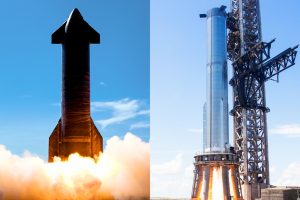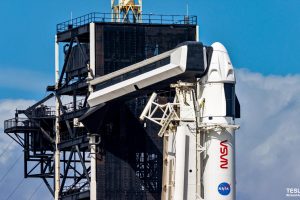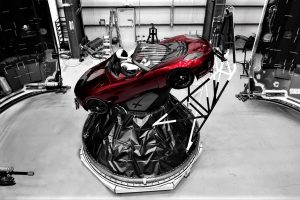Four months after SpaceX gave up on catching Falcon fairings and stripped and returned a pair of leased ships it had modified for that purpose, the company’s permanent fairing recovery solution has just come into focus.
The April 2021 departure of GO Ms Tree (formerly Mr. Steven) and GO Ms Chief from SpaceX’s East Coast fleet made it unambiguously clear that the company was abandoning fairing catching in favor of simply scooping the several million dollar nose cone halves off of the surface of the ocean. By the time that decision was made, SpaceX had reused fairing halves more than two dozen times on more than 15 Falcon 9 launches – practically none of which had actually been caught by Ms Tree or Ms Chief.
In fact, SpaceX had already begun to reuse ‘scooped’ fairing halves on commercial Falcon 9 launches, including two Transporter rideshare missions with dozens of different customers and SiriusXM’s SXM-7 multimillion-dollar geostationary communications satellite. Perhaps even more importantly, SpaceX was routinely flying splashdown fairing halves three or even four times and flew one particular half twice in just 49 days.
Put simply, thanks to the heroic and somewhat unexpected success of a small subset of SpaceX’s fairing recovery, waterproofing, design improvements, and refurbishment upgrades got so good even fairings that splashed down in the Atlantic Ocean could be rapidly reused and flown multiple (now 5+) times apiece. Onto its third consecutive year of only marginal success and a distinct lack of reliability, that meant that SpaceX’s long-struggling effort to catch Falcon fairings had effectively been made redundant.
While it’s likely that scooped fairing halves would never be certified to fly high-value US military or NASA payloads, SpaceX appears to have matured the technology to the point that it’s good enough for Starlink and many (if not most) of its private-sector launch customers. Along those lines, with Ms Tree and Ms Chief out of the picture by early April, SpaceX had to briefly shoehorn Dragon recovery ships GO Navigator and GO Searcher into scooping roles to continue recovering fairings and eventually decided to lease or rent two far larger ships with built-in deck cranes.
For whatever reason, those leases or rentals only lasted a handful of weeks apiece and the latest ship – Hos Briarwood – departed SpaceX’s fleet in early July. In an extremely rare impromptu hiatus, SpaceX hasn’t launched once since late June, likely explaining why Briarwood – with a 100% fairing recovery success rate over two missions – departed when it did.
Now, first reported by SpaceExplored.com, the first signs of SpaceX’s long-expected permanent fairing recovery solution have appeared at an obscure Louisiana drydock. By all appearances, for the first time in its history, SpaceX has outright purchased two decade-old offshore supply ships formerly known as Ingrid and Ella G. Thankfully, SpaceX wiped clean any hint of ambiguity with the installation of a classic SpaceX “X” and by renaming the ships “Bob” and “Doug” after the pair that became the first NASA astronauts to ride a Falcon 9 rocket and Crew Dragon spacecraft to orbit in May 2020.
Relative to any of SpaceX’s more permanent fleet, including ex-members Tree and Chief, Bob and Doug are massive ships, measuring more than 80m (260 feet) long. They’re also five or six times heavier than the likes of GO Searcher or Ms Tree. Aside from an obvious potential role as fairing ‘scoopers’ thanks to the installation of large deck cranes, Bob and Doug also appear to have had heavy-duty winches installed, implying that they could also double as drone ship towboats.
Potentially, that means that SpaceX could shrink the fleet of ships needed to support each drone ship booster landing from two to one, using Bog and Doug to both tow and service the landing platforms at sea.





